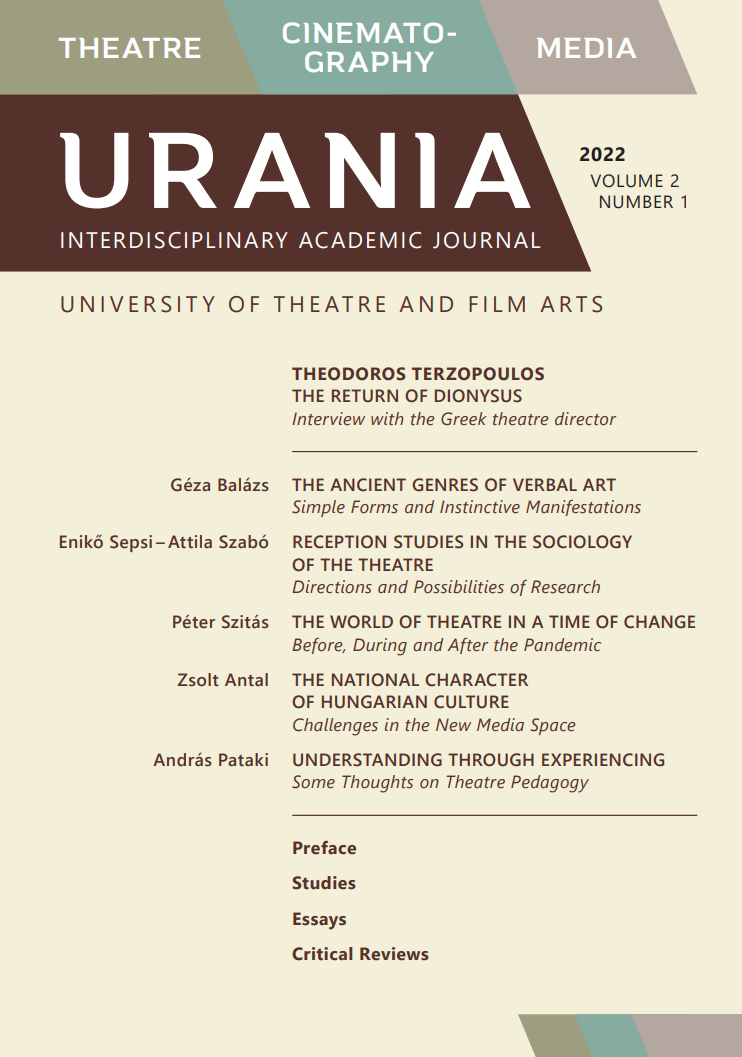Review of András Visky’s monograph
“What is Theatre for? On the way to the theatrum theologicum”
Abstract
Visky researcher Vera Prontvai also draws attention to the connection between ritual, theatrum theologicum and the Theatre of Parousia in the context of the Pseudo-Augustine dialogue: “What is Theatre for? culminates in a conversation between Pseudo-Augustine and his disciple about the beneficial success that is the basis of theatrum theologicum, in contrast to the evil success, the theatre dominated by market laws” (Prontvai 2021, 635). She goes on to say that “the theatrum theologicum described by Visky aims at immersion in transcendence: conversion itself. And the theatre aesthetics that he believes should be followed emphasises the need to face the necessity of redemption” (Prontvai 2021, 635).
References
Visky András. 2020. Mire való a színház? Útban a theatrum theologicum felé. Budapest: KRE–L’Harmattan Könyvkiadó.
Visky, András. 2020. „The Tragedy of Man as Theatrum Theologicum. (A Dramaturg’s Diary.)” In Poetic Rituality in Theater and Literature, szerkesztette Enikő Sepsi és Johanna Domokos, 225–279. Budapest: KRE–L’Harmattan Könyvkiadó.
Prontvai Vera. 2021. (86. évf.) 8. sz. „Visky András: Mire való a színház? Útban a theatrum theologicum felé.” Vigilia 635–636. Megtekintve 2022. július 24-én. https://vigilia.hu/pdfs/Vigilia_2021_08_facsimile.pdf#page=77
Harnoncourt, Nikolas. 1989. „A zene szerepe életünkben.” In A beszédszerű zene, uő, 9–13. Budapest: Editio Musica Budapest Zeneműkiadó.




